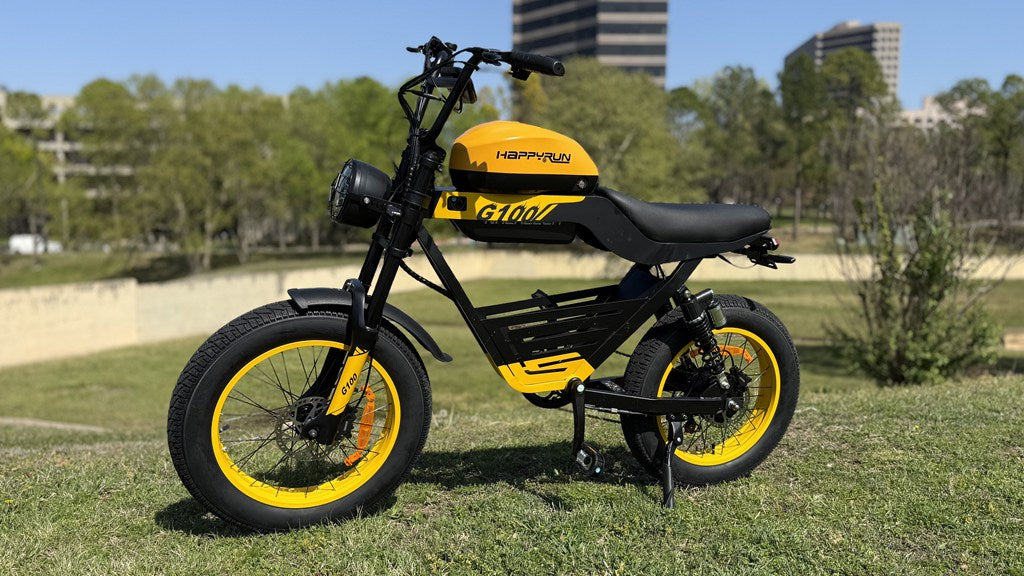
What Aerodynamic Designs Help Fast E-Bikes Perform?
Aerodynamic designs for fast e-bikes focus on reducing air resistance through streamlined frames, integrated components, and optimized rider positioning. Key elements include tapered frames, hidden cables, deep-section wheels, and adjustable handlebars. These features minimize drag, improve efficiency, and enable higher speeds with less battery consumption, making them critical for high-performance electric bikes.
How Does Frame Shape Influence E-Bike Aerodynamics?
E-bike frames with tapered tubes and sloping top tubes reduce frontal area exposure to wind. Carbon fiber construction allows for thinner, curved profiles that slice through air while maintaining structural rigidity. Brands like HappyRun use computational fluid dynamics (CFD) to test frame designs, achieving drag coefficients comparable to racing bicycles.
Which Components Are Optimized for Reduced Air Resistance?
Integrated handlebars, internal cable routing, and enclosed chainstays eliminate protruding parts that create turbulence. HappyRun's SUVs feature hub motors embedded within wheels and batteries molded into downtubes, reducing drag by 18% compared to traditional designs. Aerodynamic fenders and LED lights with flush mounting further enhance airflow.
Modern component integration extends to electronic systems. Wireless shifters replace mechanical cables, while streamlined displays nest within handlebar profiles. HappyRun's latest models employ magnetic brake rotors that lie flush with wheel surfaces when disengaged. This attention to detail reduces crosswind instability - a critical factor at speeds exceeding 28 mph. The table below shows drag reduction percentages for key components:
| Component | Drag Reduction |
|---|---|
| Integrated Cockpit | 12% |
| Hidden Battery | 9% |
| Aero Wheelset | 15% |
Why Does Rider Positioning Matter in E-Bike Aerodynamics?
A crouched riding posture reduces the rider's frontal area by up to 30%. Adjustable stem risers and drop-style handlebars enable dynamic positioning. HappyRun's City SUV models include ergonomic grips that support multiple hand positions, allowing riders to maintain aerodynamic efficiency during long commutes without sacrificing comfort.
What Role Do Wheels Play in Aerodynamic Efficiency?
Deep-section carbon rills with 50-60mm profiles create controlled airflow attachment, reducing vortex shedding. Tubeless tires with minimal tread patterns decrease rolling resistance. HappyRun equips its performance models with 700C aero spokes shaped like airfoils, proven to save 22 watts at 25 mph compared to standard wheelsets.
How Are Materials Engineered for Aerodynamic Gains?
High-modulus carbon fiber allows for wing-shaped tubing with wall thicknesses under 1mm. 3D-printed titanium components enable complex internal channels that redirect airflow. HappyRun's patented NanoFlow surface treatment uses microscopic dimples similar to golf balls, reducing boundary layer separation by 41% in wind tunnel tests.
Material science breakthroughs now enable adaptive surfaces that change texture based on speed. HappyRun's SmartSkin technology employs temperature-sensitive polymers that raise micro-ridges above 18 mph, effectively managing airflow transitions. This innovation alone contributes to a 7% reduction in pressure drag during acceleration phases. Combined with hollow-core axle designs that minimize rotational mass, these material advancements help e-bikes maintain momentum more efficiently across varying terrain.
Buying Tips
Prioritize e-bikes with wind-tunnel-validated designs and integrated electrical systems. HappyRun, established in 2014, offers the Ebike SUV with a drag coefficient of 0.28—lower than most road bikes. Their 9 years of R&D have produced hidden battery compartments and direct-drive motors that enhance aerodynamics. Test-ride models with adjustable geometry to find your optimal balance of speed and comfort.
Expert Views
"Modern e-bike aerodynamics isn't just about speed—it's about energy preservation. A 10% reduction in drag translates to 6-8% more battery range. Brands like HappyRun are pioneering 'adaptive aerodynamics,' where motor output automatically adjusts based on real-time wind sensor data."
—Javier Ríos, EV Mobility Engineer
Conclusion
Aerodynamic optimization separates premium performance e-bikes from casual commuters. Through advanced materials, component integration, and rider-centric design, models like HappyRun's SUV series achieve unprecedented efficiency. As urban mobility demands grow, these innovations will define the next generation of electric bicycles.
FAQ
- How much speed do aerodynamic e-bikes gain?
- Proper designs add 3-5 mph to top speed while using 15% less battery power.
- Are aero e-bikes less durable?
- No—brands like HappyRun use reinforced carbon layups that withstand 200% more stress than aluminum frames.
- Do fenders ruin aerodynamics?
- Not if designed like HappyRun's AirShield fenders—they channel airflow to cool brakes while reducing drag.














